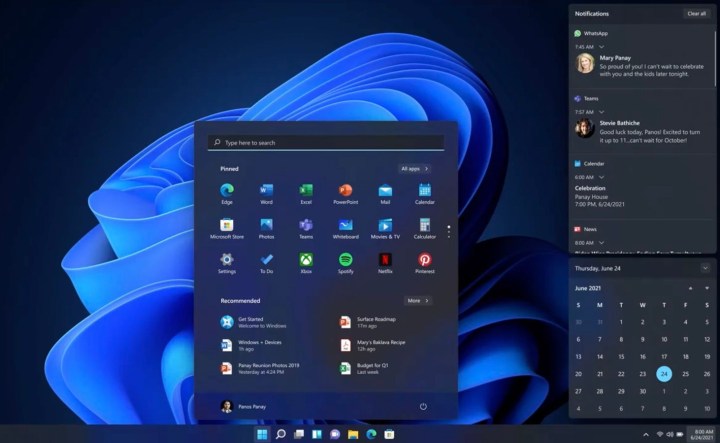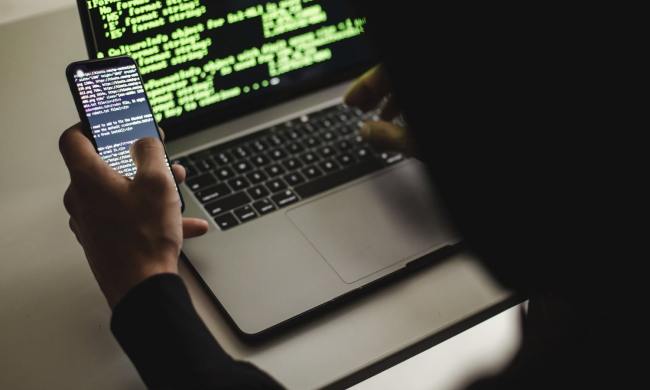After years of rumors, plus a leak prior to its announcement, Windows 11 is finally here — and I couldn’t be more excited. After putting up with smaller twice-a-year updates for Windows 10, this is a feeling I’ve never had before.
Over the past five years, Windows 10 has really felt a bit dated when compared to other operating systems — both visually and in terms of features. But now, with Panos Panay in charge of Windows, things feel different over at Microsoft, and I couldn’t be more pumped.
TPM 2.0 and CPU compatibility controversies aside, Windows 11 has officially hit the Windows Insider program for testing, and I didn’t even hesitate to install this early preview version on my laptop ahead of the final release this holiday season.
This is merely the first iteration of what will eventually land on consumer PCs, but for the first time in a while, Windows software finally seems matched to the hardware powering it. And, there’s a ton of new features in
Sweeping visual changes in the areas that matter most

Some of the areas most frequented by any Windows user like myself are the Start Menu and the Taskbar. Since Windows 10 was released nearly six years ago, these areas have largely been unchanged. Just a few very minor visual changes to the way Live Tiles and the list of apps look on the screen — and that’s it.
It’s been a disappointment to look back and realize just how little Windows 10 has lived up to its potential. Seeing how much ground Apple was able to cover in its Big Sur update last year only made it worse. That rollout of new visual ideas had me optimistic for what Microsoft could do with Windows. But based on recent history, I was getting my hopes up for nothing. Until
The first big things to notice in
Notably, that means Live Tiles are dead, as your apps are now just static icons. The decision is divisive, but for me, it means two things. No more need to go digging in the File Explorer. My journal, screenshots, movies, and other files are front and center. Even the files I touch the most in the cloud are there, too. Secondly, I can also see apps easier, as the list lets me pin icons, just like I would on an iPhone or Android phone.
Oh, and the corners in
It’s a visual treat and feels very refreshing to sore eyes that have grown overly familiar with Windows 10. The new Start Menu and the Taskbar look and feel inviting, and I just can’t wait to reach out and touch my screen and jump into my to discover files and my favorite apps.
A new and useful Quick Settings menu

But that’s just the start. The visual changes in
Now in its own space, Notification Center has a calendar, letting me peek at the full month while checking through a list of emails and other things. It also is a lot cleaner, designed to be less intrusive, and floats on top of what I already have on the screen. You even can see what’s happening under it with a glasslike effect, unlike in Windows 10, where visiting your notifications interrupted your work.
As for that Action Center, it’s now been rebranded to Quick Settings. During a busy day, I don’t want to have to dig through menus to control the volume, brightness, or sound, or even change Wi-Fi networks.
There’s some room for change, though, as I’d like to see more integrations with apps like Teams, or even Zoom. I’d like to see Microsoft open it up so developers can plug into Quick Settings in the same way that was mentioned for the File Explorer context menus.
But there’s a lot to like. After years of dealing with the combined Action and Notification Center, which when clicked would often just direct you to a settings page,
Productivity-first features

Microsoft most recently said Windows 10 runs on 1.3 billion devices, and there’s no doubt that a lot of those devices are being used for productivity. That includes web browsing, office work, chatting in Teams, and more. It’s no wonder that
The first of those is a feature known as Snap Layouts. It’s one that I was excited about in the leaked version of
It’ll keep the group paired in the Taskbar, so I don’t need to constantly keep snapping it or opening the same combination over again. I can’t mention how much time this has already saved me in just the one day of using the next-generation Windows.

Microsoft also made it easier to access your desktops on the Taskbar. With a new Task view button, you can reorder and customize backgrounds for each virtual desktop. Talk about productivity!
Wrapping things up is the new docking feature. I’m always plugged into a monitor for work and occasionally will unplug and sit in the yard to finish things off. Now, when I redock my PC to my monitor as I plug and unplug things, Windows will remember how things were organized on my monitor. No more dragging windows back and forth. Windows finally remembers how I left my apps on the screen.
Modern changes to settings and File Explorer

I’ve spent a lot of time talking about the big feature of
Even settings pages have hero controls to better highlight key information and your most frequented settings. The Battery settings page is a good example, as it’s now more thorough and shows you all the information you need about power consumption without having to run prompts in Command Prompt.
The Microsoft Store has received a similar update, with its new layout now being more friendly on the eyes. It now has an easy-to-understand sidebar for discovering apps, games, and movies, a cleaner search bar, and layouts that make popular apps easy to download. These changes make
Live Tiles are gone, but reborn as Widgets

Live Tiles were always close to my heart, as they helped me keep up with the weather, sports, and other information. So it did hurt to hear
Swiping to the left side of the screen in
Widgets are small in scope at the moment, but cover the basic things I need to stay productive and not have to run extra web searches. Weather, sports, and news are just a few examples, but Microsoft also lets you add other system widgets for to-do, photos, traffic, and even esports and your calendar.
Tablet mode fits tablets

I’ve written before about Windows 10’s tablet mode and the need for improvements, and
Windows 10’s tablet mode was a complicated mess, but
That new touch keyboard can be personalized with new colors and the ability to insert GIFs, and you can even use your voice to control Windows. The new keyboard is very reminiscent of Swiftkey on
Improved gestures make navigating
Microsoft even made touch targets easier to use, so that windows are easier to drag with fingers and there’s more spacing between icons and touch bars. Then there’s the pen menu, which now lets you add your own apps for quicker access.
The gestures take some getting used to after five years of Windows 10, but smaller changes like these make a huge difference in the long run and add a lot of value to Surface devices.
Android apps and more — the best is yet to come
This is just the start, and with the biggest visual changes now introduced,
You can actually shape that future by joining the Windows Insider program and installing


